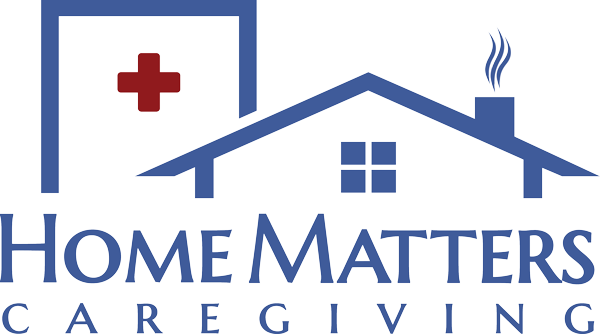Caring Beyond Borders: Global Trends in Home Care Services
In our rapidly evolving world, the concept of home care services has transcended geographical boundaries, emerging as a critical aspect of healthcare systems worldwide. Welcome to "Caring Beyond Borders: Global Trends in Home Care Services," where we embark on a journey to explore the dynamic landscape of in-home healthcare. As populations age, chronic illnesses become more prevalent, and individuals seek greater autonomy in managing their health, the demand for home-based care has soared. This trend isn't confined to specific regions; it's a universal phenomenon reshaping the healthcare industry's approach to patient well-being. Through this blog series, we delve into the diverse array of home care services offered across different continents, examining the cultural, economic, and technological factors influencing their evolution. From innovative telemedicine solutions in urban hubs to traditional caregiving practices in rural communities, the scope of home care services reflects both the challenges and opportunities in meeting the evolving healthcare needs of populations worldwide. Join us as we navigate this dynamic terrain and uncover the global trends shaping the future of home-based healthcare.
The Evolution of Home Care: A Global Perspective
Home care services have undergone a remarkable evolution, transcending geographical boundaries to become a vital component of modern healthcare systems worldwide. From humble beginnings rooted in familial caregiving to the sophisticated, technology-driven solutions of today, the journey of home care reflects broader societal shifts in aging populations, healthcare delivery models, and technological advancements. In this exploration, we delve into the multifaceted evolution of home care, examining its historical context, current global trends, and future prospects.

Origins of Home Care
Home care, in its simplest form, traces back to ancient times when families and communities relied on each other for support during times of illness or infirmity. In agrarian societies, extended families often provided care for elderly relatives within the home, ensuring their comfort and well-being. However, as industrialization and urbanization reshaped societal structures, traditional caregiving dynamics began to shift, paving the way for formalized home care services.
Rise of Formal Home Care Services
The early 20th century witnessed the emergence of organized home care services, initially driven by philanthropic efforts and religious institutions. Nursing associations played a crucial role in training and deploying visiting nurses to provide medical care and support to patients in their homes. These pioneering efforts laid the foundation for the professionalization of home care and set the stage for its expansion in the decades to come.
Post-War Developments
The aftermath of World War II brought about significant changes in healthcare delivery, including the rise of government-funded home care programs in several countries. In the United States, initiatives such as Medicare and Medicaid provided financial support for home health services, enabling more patients to receive care in familiar surroundings. Similar programs emerged in Europe and other parts of the world, reflecting a growing recognition of the benefits of home-based care.
Technological Advancements
The latter half of the 20th century saw rapid advancements in medical technology, which revolutionized the delivery of home care services. Innovations such as portable medical devices, telehealth platforms, and remote monitoring systems empowered healthcare providers to deliver high-quality care outside traditional clinical settings. These technological breakthroughs not only improved patient outcomes but also increased the efficiency and accessibility of home care services on a global scale.
Aging Population and Shifting Demographics
The demographic shift towards an aging population has had a profound impact on the demand for home care services worldwide. As life expectancy continues to rise and birth rates decline in many countries, the need for long-term care and support for seniors has escalated. Home care agencies have responded by expanding their offerings to include specialized services tailored to the unique needs of older adults, ranging from assistance with activities of daily living to dementia care and palliative care.
The Rise of Telemedicine: Bridging Gaps in Home Care Access
Telemedicine, once a niche concept, has rapidly emerged as a cornerstone of modern healthcare delivery, particularly in the realm of home care services. With advancements in technology and changing patient preferences, telemedicine has become a powerful tool for extending medical care beyond traditional clinical settings, bridging geographical barriers, and improving access to home-based healthcare services. In this exploration, we delve into the transformative role of telemedicine in home care, examining its benefits, challenges, and future implications.
Telemedicine: A Paradigm Shift in Healthcare Delivery
Telemedicine encompasses the use of telecommunications technology to facilitate remote medical consultations, diagnosis, monitoring, and treatment. It represents a paradigm shift in healthcare delivery, offering patients the convenience of accessing medical care from the comfort of their own homes. By leveraging video conferencing, secure messaging platforms, and remote monitoring devices, telemedicine enables healthcare providers to deliver timely and personalized care to patients regardless of their location.
Overcoming Geographical Barriers
One of the primary advantages of telemedicine in home care is its ability to overcome geographical barriers that often hinder access to healthcare services, particularly in rural or underserved areas. Patients living in remote regions or areas with limited healthcare infrastructure can now receive virtual consultations with specialist physicians, access second opinions, and receive ongoing medical monitoring without the need for lengthy travel or inconvenience.
Enhancing Continuity of Care
Telemedicine plays a crucial role in enhancing continuity of care for patients receiving home-based services. By facilitating seamless communication between healthcare providers, caregivers, and patients, telemedicine ensures that critical medical information is shared in real-time, enabling timely interventions and coordinated care plans. This integrated approach reduces the risk of medical errors, improves medication adherence, and enhances patient outcomes.
Empowering Patients and Caregivers
Telemedicine empowers patients and caregivers by providing them with greater control over their healthcare journey. Through virtual consultations, patients can actively participate in decision-making, ask questions, and express concerns in a supportive and convenient environment. Caregivers, likewise, benefit from remote access to healthcare professionals, enabling them to seek guidance, receive training, and access resources to better care for their loved ones at home.
Remote Monitoring and Chronic Disease Management
Telemedicine facilitates remote monitoring and management of chronic conditions, enabling healthcare providers to track patients' vital signs, medication adherence, and symptoms from a distance. Wearable devices, mobile apps, and connected health platforms allow for continuous data collection and real-time alerts, alerting providers to potential health issues before they escalate. This proactive approach to chronic disease management improves patient outcomes, reduces hospital admissions, and enhances quality of life.
The Future of Home Care: Trends and Predictions
The future of home care is poised for significant transformation, driven by emerging trends and advancements in healthcare technology. As populations age, preferences shift, and healthcare systems adapt, home care services will play an increasingly pivotal role in delivering personalized, accessible, and high-quality care to individuals in their own homes. In this exploration, we highlight key trends and predictions shaping the future landscape of home care.
Personalized Care Delivery: The future of home care will prioritize personalized care delivery, tailored to meet the unique needs and preferences of each individual. Advancements in artificial intelligence, predictive analytics, and genomics will enable healthcare providers to develop customized care plans, optimize treatment outcomes, and enhance patient satisfaction.- Technology Integration: Technology integration will continue to revolutionize home care services, facilitating remote monitoring, telemedicine consultations, and medication management. Wearable devices, smart sensors, and mobile health apps will empower patients to actively participate in their care while enabling healthcare providers to deliver proactive and timely interventions.
- Collaborative Care Models: Collaborative care models will become increasingly prevalent, involving multidisciplinary teams of healthcare professionals, caregivers, and community resources. Interdisciplinary collaboration will promote care coordination, prevent hospital readmissions, and optimize resource utilization, ultimately improving patient outcomes and reducing healthcare costs.
- Aging in Place: Aging in place will remain a dominant trend in home care, as older adults express a strong preference for maintaining independence and dignity in familiar surroundings. Home care services will evolve to support aging populations with specialized programs, adaptive technologies, and community-based resources, enabling seniors to age comfortably and safely in their own homes.
Conclusion
The landscape of home care services is undergoing significant transformations globally. From technological advancements to changing demographics and evolving consumer preferences, the industry is adapting to meet the diverse needs of individuals requiring care at home. As we navigate these changes, it's essential to prioritize quality, compassion, and innovation to ensure that every individual receives the support they deserve. By staying informed about these global trends, we can better equip ourselves to provide exceptional care and support to those in need, regardless of geographical boundaries.
For more information on how Home Matters Caregiving in Pittsburgh is addressing these global trends and providing compassionate home care services tailored to your needs, please don't hesitate to reach out to us at (800) 298-5140. Our dedicated team is here to answer any questions you may have and discuss how we can support you or your loved ones with the highest standard of care.
Caregiver Services
Home Care Services
Home Matters Caregiving
Mon - Fri • 9am - 7pm CST
Greater Cleveland Region
Greater Philadelphia Region
Greater Pittsburgh Region
Personal & Companion Care
Specialized Care
Additional Services
Home Matters Caregiving
Mon - Fri • 9am - 7pm EST
Greater Cleveland Region
Greater Philadelphia Region
Greater Pittsburgh Region
Personal & Companion Care
Specialized Care
Home Matters. All Rights Reserved.

